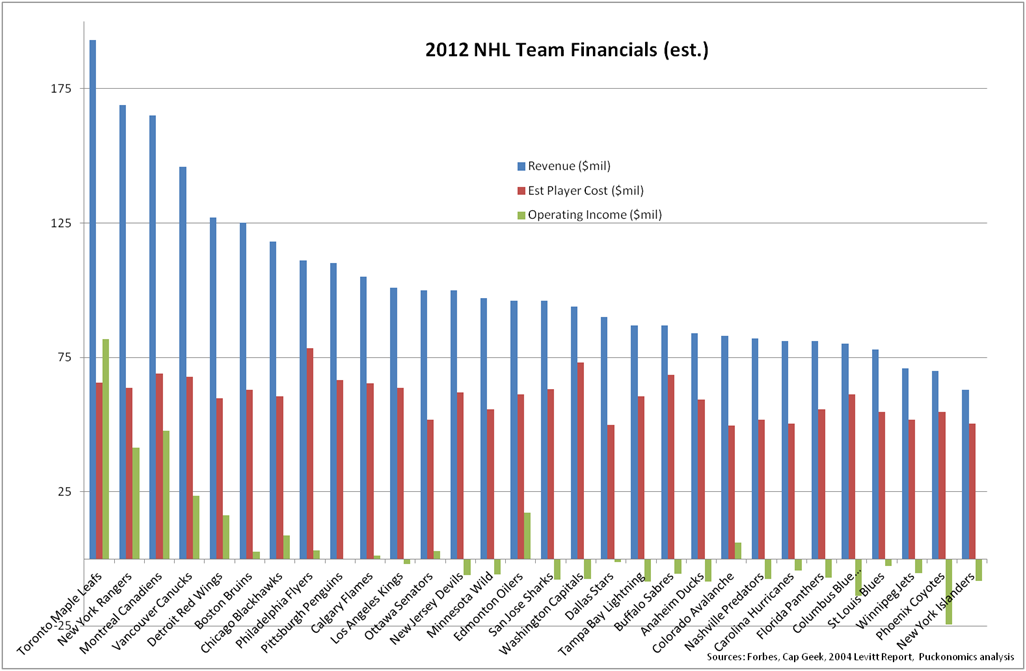NHL Team by Team Economics
August 16, 2012 Leave a Comment
Now that we have looked at the general economics of the NHL as an entertainment /sports league compared to similarly structured industries, it is important to review the economics of individual teams (aka markets). Not all teams are created equal in the NHL portfolio and as a results there will always be ‘stars’ and ‘dogs’ and everything in between.
While the following data may or may not be exactly right, the over numbers do add up and certainly provide an excellent framing of the issues that are being discussed about big market vs. small market teams. The following data is from Forbes, Cap Geek, our own analysis and leverages some additional operating cost details from the 2004 Levitt Report (adjusted for 2012 numbers).
Clearly there is a massive different between the Top 5 revenue teams are the Bottom 5 by basically a factor of more than 2:1 in aggregate. This disproportionate sizing significantly affects smaller revenue teams since the salary cap is a factor of overall league revenues, so in effect as the big markets grow, the smaller markets must disproportionately spend a greater percent of their revenues on player salary just to remain competitive. The following table compares big difference in player salary as a percent or revenue at the two ends of the spectrum:
So what does this mean? Large revenue teams have huge margins, but small revenue teams are going to struggle to break even because their operating costs need to be less than 33% of costs.
Based on our analysis and extrapolating data from the Levitt report, we estimate the average operating costs for a team is about $38.5M per year (and of course varies by team/market). But at roughly those fixed costs, it is nearly impossible for small revenue teams to breakeven without changes to their cost structure.
This might be obvious to many people, but seeing the actual numbers and how many teams are affected by the overall average salary cap because of the disproportionate size of the Top 5 teams makes it a little more concrete how big the issue is.

